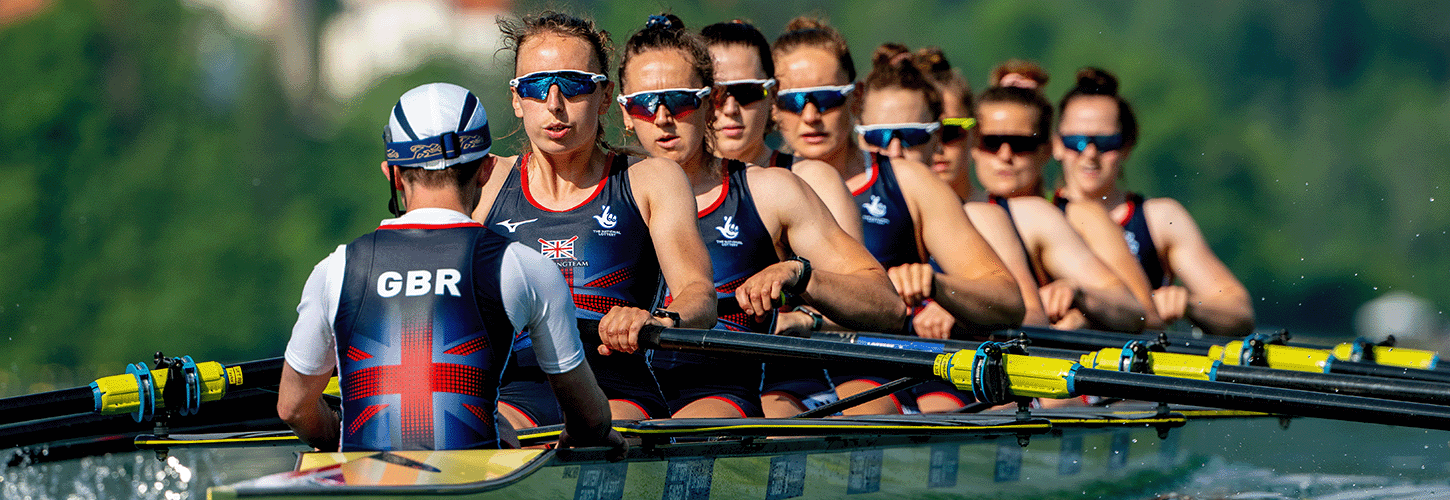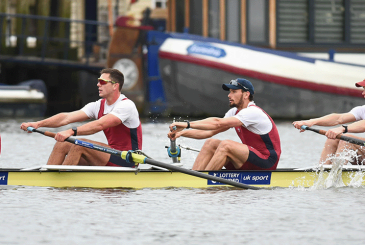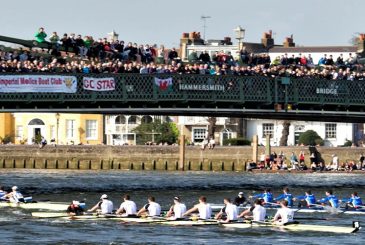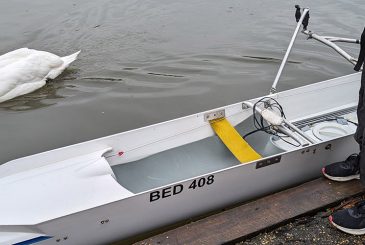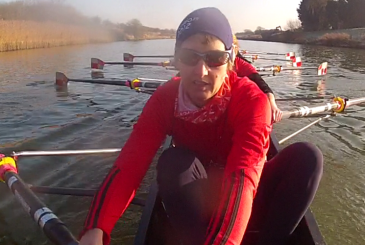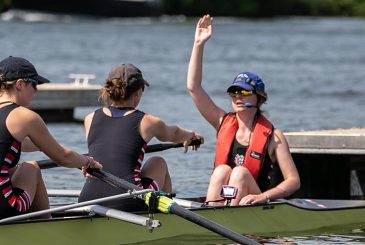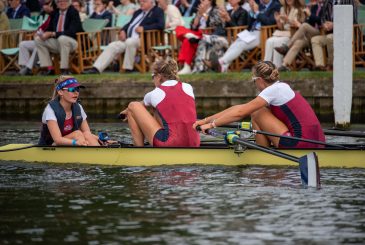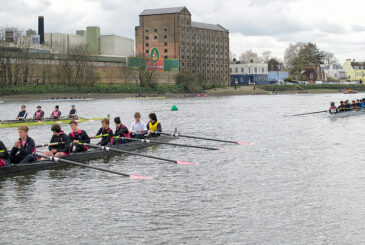Rowley Douglas, Olympic champion cox of the men’s eight in 2000, explains how a cox can maximise the start and transition to race rhythm
Henley Women’s Regatta and Henley Royal Regatta are fast approaching, so it seems fitting to make them the focal point for this article. Henley is somewhat different to the racing you may have already taken part in this year – it being a one-on-one, multi-round ‘winner-stays-on’ regatta raced between wooden booms, but the lessons are largely transferable.
It’s not for me to say that the start should be three-quarters, half, half, etc – you should develop a start that works for your crew by testing different things and working closely with your coach. Robin Williams’ advice on racing starts may be a useful input for you in developing your start. Instead, what I will focus on is how, as a cox, you can approach the start practice and the starting gate to maximise getting away quickly. We can then move onto the race plan itself; again, I won’t prescribe a plan, but rather I’ll explore how to develop and execute it.
The start
When you practise starts, the cox can provide invaluable feedback to both the crew and coach on what things are looking and feeling like, while you go through the build up of strokes. This feedback will help shape changes that you need to make or reinforce things that you agree are working well. You need to really keep a good handle on what is working and what key words are having effect; this will be important when you come to your race warm-up on the day as you will be running it without the coach. During the start sequence it is wise to keep the word count to an absolute minimum due to the speed and noise surrounding the start, concentrate instead on the delivery and timing of those words.
When it comes to race day you will be in charge of conducting an effective warm-up, make sure you have planned out in your mind where you intend to do each section of the warm-up routine and allow enough time for delays – you do not want to be rushing through it and cutting short the starts. This is especially important at Henley due to the huge number of other watercraft and limited clear water available.
When you practise your starts, especially at Henley, find a clear and quiet section of river and use your voice to create a calm environment to execute clean and relaxed starts. At big internationals like the Olympic Games there is normally a quiet and private warm-up area, which allows total focus. I do, however, remember once we had left that area: we paddled to the start at the Olympic final, and an Australian guy was screaming at us that we were “going down and could not win”, but we had already completed our starts warm-up and he was just adding fuel to the fire!
“It is easy to allow the emotion of the event to overcome you and the crew”
At Henley I have had all manner of things shouted at me on the way down the river – most of it well intended fun, but a potential distraction nonetheless! So before you get started, build a picture of what to expect from the moment you attach to the stake-boats through to the first hundred metres. Henley is great for this because you can describe some very distinctive markers. I would advise trying to find water below the start where there is less crowding: it is easy to allow the emotion of the event to overcome you and the crew, and this has to be put out of mind.
The first time I raced at Henley was when I was at Monkton Combe School in 1994; both Steve Williams, who became Olympic Champion in 2004 and 2008, and I were in the boat. The first stroke taken featured a lot of ‘air strokes’ by our crew followed by some further ‘fly swatting’ and then an absolute hosing from our Canford opponents – so much so that the umpire recorded a verdict of “An easy win for the winners and vice versa for the losers”! Joking aside, we were not going to win that race, but we could have been calmer and more focused on the start, giving us a better chance of getting away well and into our rhythm.
Visualise your start, practise your start, and execute your start.
Since then I have raced in most of the coxed events and some, though not all, have been won or lost as a result of the execution, the effective start sequence and the transition to pace.
Visualise your start, practise your start, and execute your start.
Race planning and execution
Your race plan will be in part based on your learning during the season to date: calls that have worked well, themes that the crew has bought into, and, of course, your collective journey. You now need to refine things and in some cases discard elements that are not relevant to a shorter and sharper type of racing. It is good to do this as a group, but not a bad thing to have prepared some suggestions beforehand with the coach and or stroke. Agreement from everyone will mean a collective buy-in and will also give an understanding of what is expected when the calls are delivered – both important aspects.
Most race courses have some key markers in the form of distance boards or landmarks, the latter being Henley’s great strength. It is still important to know what the actual distances and approximate timings are, as these will mean far more to the oarsmen and women. The age-old landmarks provide very obvious points to build a plan around, not necessarily big pushes but perhaps more subtle aspects of the plan – for instance, technical pushes to ensure the standard is high throughout the race. There might also be known deficiencies that you need to minimise, or equally, strengths that you want to capitalise on.
During practice, I like to commentate through the landmarks and bring the course to life, just as I suggested when practising the start. Build a picture for the crew of what they will be doing at each point on the race course. Don’t be afraid to show a little passion and excitement while you take them through this type of exercise.
How to learn from Henley if you’re not racing there
And what if you are not racing at Henley this year? Well, there are still a couple of things that I would recommend if you just want to use Henley as a learning experience (don’t worry, there will be plenty of time left to visit the bar).
Make the effort to get down to the start during racing
A good idea is to make your way down the course towards the start during the morning practice; you are highly likely to see some of the national team boats out in the morning light when the river is very peaceful. You may even get to see a practice start at a proximity not possible anywhere else.
The second thing that I would recommend is to make the effort to get down to the start during racing; it is not very crowded and you can look down off the bank at the crews as they compete for the lead down the length of Temple Island. It’s a great chance to hear what is being said and see how different crews attack the start in a pressure situation – you could even film some.
This article was first published in Rowing & Regatta magazine in June 2011.


